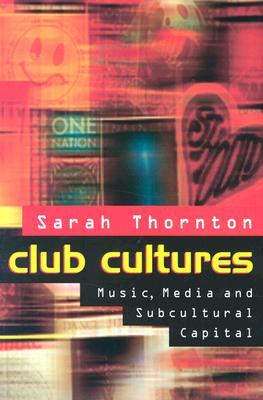A close look at the music and culture of dance clubs and the "rave" phenomenon..
Focusing on youth cultures that revolve around dance clubs and raves in Great Britain and the U.S., Sarah Thornton highlights the values of authenticity and hipness and explores the complex hierarchies that emerge within the domain of popular culture. She portrays club cultures as "taste cultures" brought together by micro-media like flyers and listings, transformed into self-conscious "subcultures" by such niche media as the music and style press, and sometimes recast as "movements" with the aid of such mass media as tabloid newspaper front pages. She also traces changes in the recording medium from a marginal entertainment in the 50s to the clubs and raves of the 90s.
Drawing on the work of Pierre Bourdieu, Thornton coins the term "subcultural capital" to make sense of distinctions made by "cool" youth, noting particularly their disparagement of the "mainstream" against which they measure their alternative cultural worth. Well supported with case studies, readable, and innovative, Club Cultures will become a key text in cultural and media studies and in the sociology of culture.

Club Cultures: Music, Media, and Subcultural Capital
A close look at the music and culture of dance clubs and the "rave" phenomenon..
Focusing on youth cultures that revolve around dance clubs and raves in Great Britain and the U.S., Sarah Thornton highlights the values of authenticity and hipness and explores the complex hierarchies that emerge within the domain of popular culture. She portrays club cultures as "taste cultures" brought together by micro-media like flyers and listings, transformed into self-conscious "subcultures" by such niche media as the music and style press, and sometimes recast as "movements" with the aid of such mass media as tabloid newspaper front pages. She also traces changes in the recording medium from a marginal entertainment in the 50s to the clubs and raves of the 90s.
Drawing on the work of Pierre Bourdieu, Thornton coins the term "subcultural capital" to make sense of distinctions made by "cool" youth, noting particularly their disparagement of the "mainstream" against which they measure their alternative cultural worth. Well supported with case studies, readable, and innovative, Club Cultures will become a key text in cultural and media studies and in the sociology of culture.